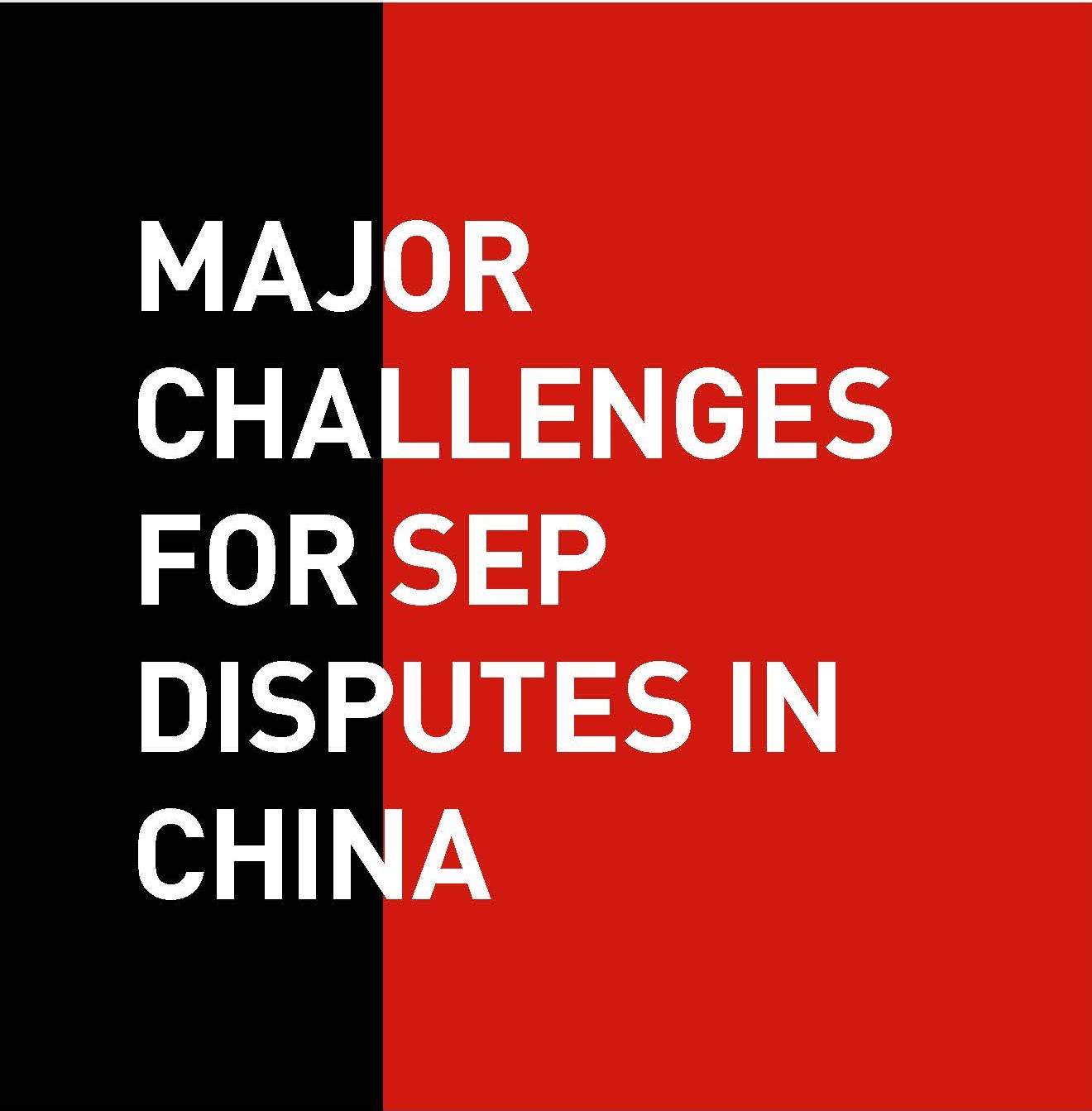
In the past decade, there has been a considerable surge in SEP disputes globally. This increase is particularly notable in China, largely due to rapid advancements in the information industrythat have established numerous domestic implementers in the manufacturing sector. Consequently, China has emerged as a significant battleground for SEP disputes, with a number of high-profile cases resulting in a slew of anti-suit injunctions (ASIs) between Chinese and foreign courts. This article will delve into the key issues at the heart of SEP litigation in China, drawing upon relevant case studies.
Legislation on SEP disputes
Chinese courts review three types of SEP disputes:
• patent infringement cases, where a rights holder may seek damages or injunctive relief, or both;
• FRAND rate-setting cases, where a rights holder or implementer may request the court to adjudicate FRAND licensing terms; and
• antimonopoly civil cases, where issues such as excessive pricing or discriminatory treatment arising from an abuse of IP rights are heard.
FRAND rate-setting cases allow the parties to proactively ask Chinese courts to determine FRAND rates, irrespective of whether they were sued for patent infringement in China.
SEP regulation under antimonopoly laws is more complex. China's Antimonopoly Law generally stipulates that operators who abuse IP rights to exclude or restrict competition are subject to this piece of legislation. More specific provisions – such as the determination of market dominance and typical horizontal or vertical agreements – are provided by the Regulations Prohibiting the Abuse of Intellectual Property to Exclude or Restrict Competition, the Antimonopoly Guidelines in the Field of Intellectual Property and the Antimonopoly Guidelines in the Field of SEPs (draft for comments). Although these regulations are issued by the administrative authorities, they can be referenced in civil litigation proceedings.
Key issues in SEP disputes
Jurisdictional quandaries in parallel litigation with foreign elements
Traditionally, patent infringement cases and associated injunction requests have been filed across numerous countries. The territoriality of patents ensures that judicial reviews related to patent validity and infringement will not result in conflicting judgments. However, divergent views may emerge over the FRAND compliance of licensing conditions. The situation is further complicated by the possibility of filing a separate FRAND rate determination lawsuit in China. This could lead to inevitable conflicts when both Chinese and foreign courts strive to establish global FRAND conditions based on identical facts.
Issues emerging from multinational parallel SEP litigations include:
• the authority of a Chinese court to determine a global FRAND rate;
• the determination of the court's jurisdiction over a FRAND rate-setting
case; and
• the enforcement of ASIs and anti-enforcement injunctions (AASIs).
Authority to determine global FRAND rates
Chinese courts have traditionally exhibited a conservative stance by setting solely China-specific FRAND rates; however, cases in late 2020 indicated a shift in this perspective. Chinese implementers Xiaomi and Oppo prompted the courts to establish a global SEP rate in their lawsuits against InterDigital at the Wuhan Intermediate People's Court (IPC) and against SHARP at the Shenzhen IPC.
“Chinese courts steadfastly maintain that they have jurisdiction over cases within China, irrespective of how foreign courts may handle parallel litigation proceedings”
Neither court rejected the request to set the global FRAND rate. The Shenzhen IPC's ruling on SHARP's jurisdictional challenge outlined the reasons for accepting jurisdiction to set global FRAND rates as follows:
• both parties intended to agree on a global licence during negotiations;
• China was the most convenient forum for setting the global rate due to its position as the primary manufacturing location for Oppo's products and the market at large; and
• the increased efficiency of determining a global rate to circumvent multiple litigation proceedings.
With Chinese courts' increasing willingness to set a global rate and the prospect of filing a FRAND rate-setting lawsuit before being sued by SEP rights holders, China is emerging an advantageous jurisdiction for implementers – as demonstrated by Samsung's request for the Wuhan IPC to determine a FRAND rate for Ericsson's global portfolio.
Jurisdiction in FRAND rate-setting cases
The possibility to launch a FRAND rate-setting lawsuit was introduced by Interpretation II of the Supreme People's Court on Several Issues Concerning the Application of Law in the Trail Patent Infringement Dispute Cases (Judicial Interpretation II) issued by the Supreme People's Court (SPC). There exists no specific regulation concerning jurisdiction for these lawsuits, particularly when addressing issues of comity. However, Chinese courts steadfastly maintain that they have jurisdiction over cases within China, irrespective of how foreign courts may handle parallel litigation proceedings.
On 21 August 2020, the SPC delivered its final judgment on the jurisdiction objection in ZTE v Conversant. The SPC affirmed the jurisdiction of the Shenzhen IPC over the SEP FRAND rate-setting disputes arising from Chinese patents because ZTE had implemented the disputed patent in Shenzhen and, therefore, the Chinese court was the most appropriate forum within which to review the case.
Enforcement of injunctions
Often, SEP holders have sought ASIs from UK and US courts, aiming to prevent parties from initiating or continuing parallel litigation proceedings in other jurisdictions. Before 2020, ASIs were a novel concept for Chinese courts. In an unexpected turn of events, four ASIs were issued by Chinese courts in the latter half of 2020, which were requested by Huawei, Xiaomi, Oppo and Samsung.
In August 2020, the first-ever Chinese ASI was granted in Huawei v Conversant. That case ultimately culminated in a settlement. Following the issuance of the China FRAND rate decision by the Nanjing IPC in September 2019, the SPC granted an ASI to bar the Dusseldorf Regional Court from enforcing its injunction against Huawei in Germany until the Chinese proceedings had concluded. The ruling hinged on the belief that Conversant’s enforcement of the Dusseldorf judgment could obstruct the Chinese court's judicial review or render its judgment unenforceable, as the global FRAND rate established in the German proceedings was significantly different than the Chinese rate determined by the Nanjing IPC.
In Xiaomi v InterDigital, the Wuhan IPC acceded to Xiaomi’s ASI request against InterDigital on 23 September 2020. In a countermove, the Delhi High Court granted InterDigital an AASI on 9 October 2020, effectively prohibiting Xiaomi from enforcing the ASI granted by the Wuhan IPC until the conclusion of the Indian proceedings. Interestingly, another ASI was issued by the Wuhan IPC in Samsung v Ericsson on 25 December 2020 and, a mere three days later, a US court granted Ericsson an AASI against Samsung.
A definitive assessment of the impact of ASIs and AASIs on ongoing SEP licensing negotiations remains elusive. Parties now find themselves in a quandary: should they abide by the ASI or the AASI? Regardless of their choice, they will be in breach of one injunction. How courts will enforce their ASIs and AASIs is still unclear.
Methodology for determining FRAND rates
The determination of a FRAND rate is a pivotal issue in SEP cases. Contention surrounding ASIs would be mitigated if courts had a universal criterion for establishing the FRAND rate. Chinese courts commonly employ two methods in their determination of a FRAND rate: the comparable licensing agreements approach and the top-down approach.
The comparable licensing agreements approach bases the licence rate on similar, commercially negotiated patent licence agreements. Conversely, the top-down approach first ascertains the total royalty rate payable for all SEPs of a specific standard, then distributes the total in accordance with the proportion of SEPs owned by the patentee relative to the total number of SEPs of the standard.
In 2013, the Guangdong High People's Court (HPC) applied the comparable licensing agreements approach in Huawei v InterDigital. The HPC referenced InterDigital's licence rate to Apple and determined it to be a comparable licensing agreement for the purposes of this case. However, the ruling was met with criticism, as it overlooked the fact that Apple paid a lump-sum royalty each quarter rather than a per-unit royalty. This highlights the primary challenge with the comparable licensing agreements approach – that is, the difficulty in locating a truly comparable agreement.
In Huawei v Conversant in 2019, the Nanjing IPC opted not to apply the global royalty rate from Unwired Planet, determined by a UK court, as a comparable rate, primarily because Conversant only held one valid and essential patent out of 15 in its Chinese portfolio. The IPC adopted the top-down approach, which sets a limit on the FRAND rate, maintaining that the sum of royalties from different patent holders does not surpass a reasonable upper limit.
The Nanjing IPC justified its choice of this approach by citing the difficulties inherent in the comparable licensing agreements approach, including the challenge of identifying a truly comparable agreement. The IPC also acknowledged the issues inherent in the top-down approach, primarily the difficulty in determining the total number of SEPs and those owned by the licensor. Despite the potential for error due to the large number of denominations and the impracticality of verifying each one in detail, the IPC considered this the most effective solution and prioritised efficiency over strict accuracy.
“It would be premature to conclude that the Chinese courts favour the topdown approach over the comparable licensing agreements approach”
Nevertheless, it would be premature to conclude that the Chinese courts favour the top-down approach over the comparable licensing agreements approach.
Access to injunctions
The implications of a SEP injunction can be significantly detrimental to the implementer, and courts often exercise caution before issuing such an injunction. Judicial Interpretation II states that, if the patentee intentionally contravenes the FRAND principle and the alleged infringer is not evidently at fault during the negotiation, an injunction usually will not be granted.
The Guidelines for Determining Patent Infringement 2017 issued by Beijing HPC stipulate that, barring any obvious faults by either party, especially when the alleged infringer provides a guarantee, an injunction is usually not granted. The Guidelines of the Guangdong HPC for Reviewing SEP Disputes (Trial) propose that an injunction may be granted when the patentee is not at fault and the alleged infringer is clearly at fault. However, it does not contemplate the scenario where both parties are at fault.
Chinese courts generally maintain that injunctive relief is only applicable if the patentee is not at fault and the implementer is clearly at fault. Fault is typically assessed from the procedural perspective during negotiations, considering factors such as the parties' active participation, timely response to offers and any malicious delay in negotiations. To encourage negotiation between parties, courts may allow the injunction to be suspended while negotiations progress.
In IWNCOMM v Sony in 2018, the Beijing HPC ruled that the patentee's commitment to license under the FRAND principle does not provide automatic grounds for others to implement its SEPs without permission. Sony was deemed to have deliberately and maliciously delayed the negotiation by refusing to sign a non-disclosure agreement and repeatedly claiming that it could not associate patents with the products without offering further explanations or suggestions. Given Sony's evident fault, the HPC granted IWNCOMM's request for injunctive relief.
In Huawei v Samsung, the Shenzhen IPC found that Samsung had maliciously delayed negotiations and acted in bad faith, whereas Huawei had complied with its FRAND obligations. Samsung was deemed to have intentionally delayed the cross-licence negotiation process, notably by bundling SEPs and non-SEPs together and refusing a separate negotiation over the SEPs, not actively responding to Huawei's claim charts, failing to offer new conditions or counter-offers and unjustifiably rejecting Huawei’s proposal for neutral arbitration. Samsung also failed to propose substantive plans for dispute resolution during court-organised mediation and was found to have acted in bad faith. The IPC ruled that Huawei's offer had adhered to its FRAND obligations, whereas Samsung's had not, resulting in the granting of an injunction that ordered Samsung to cease all infringing activities immediately.
Although the above cases demonstrate the theoretical possibility of obtaining injunctive relief in China, no foreign SEP holders have achieved this to date. Currently, both rights holders and implementers are unlikely to commit obvious procedural errors. Implementers typically counter-offer significantly lower rates than what the rights holder proposes. The dispute then revolves around determining a FRAND rate. In China, implementers can file a lawsuit for FRAND rate determination even before being sued for patent infringement by rights holders, which makes it virtually impossible for SEP holders to obtain injunctive relief.
Conclusion
The crux of the matter in SEP disputes lies in the determination of FRAND rates. This issue attracts a diverse range of perspectives from SEP rights holders, implementers, and both Chinese and foreign courts, leading to a significant divergence of views. While SEP disputes are fundamentally business conflicts, their resolution can potentially escalate to the political level. It is incumbent upon policymakers and stakeholders to devise a system that can effectively mediate the discord between SEP rights holders and implementers, thereby fostering an environment that is conducive to unlocking innovative opportunities.











